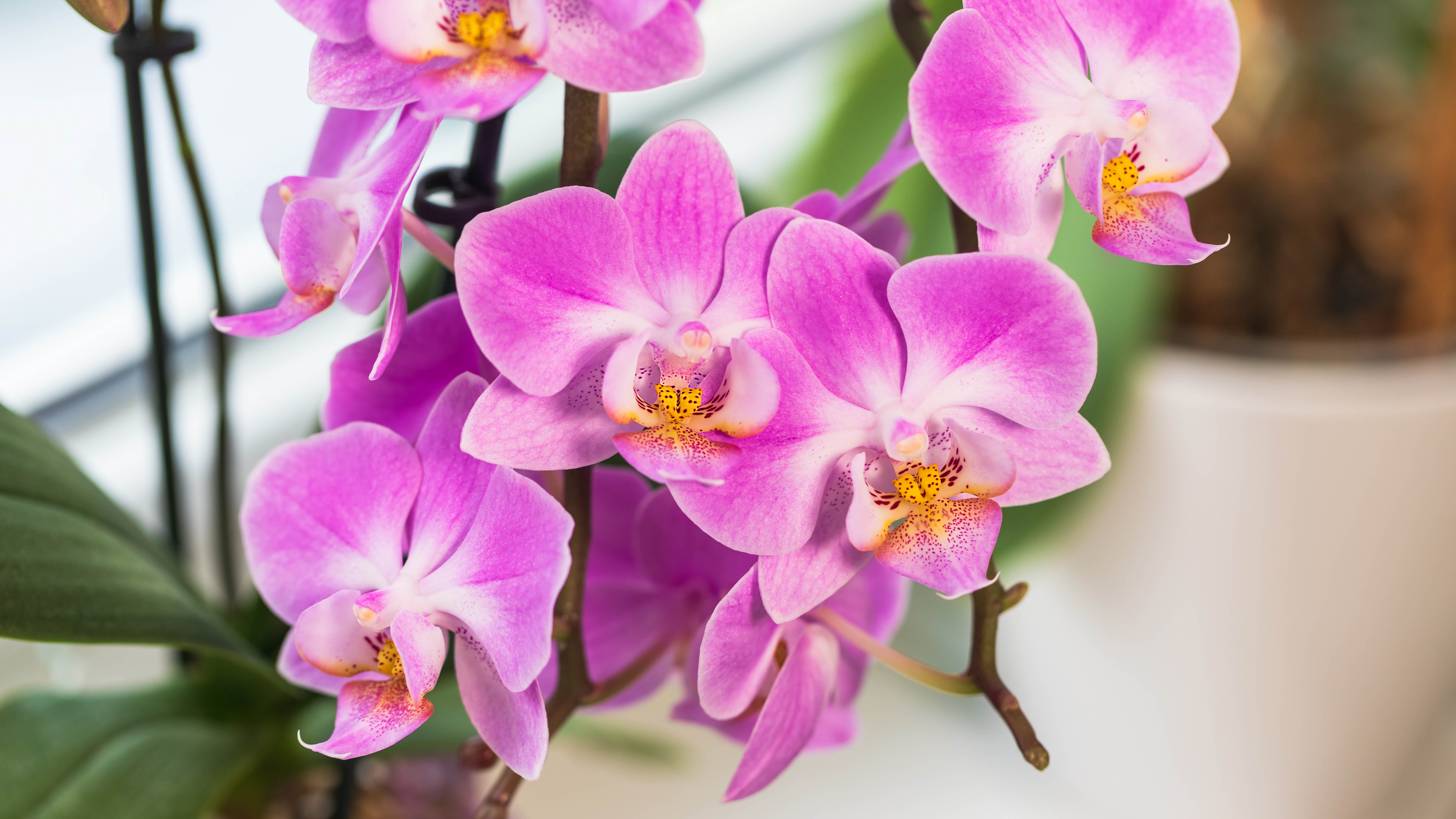
Cultivation of Orchids
Botanical Name: Dendrobium sp.
Family: Orchidaceae
Important Genera:
- Dendrobium
- Cattleya
- Phalaenopsis
- Cymbidium
General Importance and Uses:
- Cut Flowers: Orchids are highly valued as cut flowers due to their long vase life and aesthetic appeal.
- Diversity: Orchids show a wide range of diversity in form, color, size, and texture.
- Indoor and Outdoor Planting: Suitable for both indoor decorations and garden planting, with different species being used in pots, baskets, and other containers.
- Special Functions: Frequently used for decorative purposes in weddings, festivals, and other special occasions.
Types of Orchids
- Sympodial Orchids Growth Habit: Prostrate rhizomes; growth terminates with an upright pseudobulb, leaf, and flowers. Examples: Dendrobium, Cattleya, Cymbidium.
- Monopodial Orchids Growth Habit: Vertical growth with aerial roots; flowers produced along the stem. Examples: Phalaenopsis.
Climate and Environmental Conditions
- Temperature: Ideal temperature range: 18–28°C. Orchids are tropical plants that require stable temperature conditions for healthy growth.
- Humidity: Prefer high humidity levels (70-80%). Humidity can be maintained with misting systems, overhead sprinklers, or placing plants on humidity trays.
- Light: Orchids prefer bright, indirect light. Light intensity: 1500-2000 foot-candles. Direct sunlight should be avoided as it can scorch the leaves.
- Shade Net: Growing orchids under 75% green shade nets helps reduce direct sunlight exposure while providing appropriate light levels for growth.
- Rain Shelter: In areas with heavy rainfall, orchids need rain shelters to prevent excessive water accumulation and fungal infections.
Growing Media and Containers
- Growing Media:
- Orchids thrive in well-draining growing media. Common mixtures include:
- Charcoal
- Broken pieces of bricks or tiles
- Coconut husk and fiber
- Sand or perlite for added drainage.
- Orchids thrive in well-draining growing media. Common mixtures include:
- Containers:
- Orchids are best grown in perforated earthen pots, which allow good airflow to the roots.
- Containers should be chosen based on the size of the plant and root system.
Propagation Techniques
- Division of Clumps: Orchids grow in clumps, and these can be divided to propagate new plants. Each division must have at least one old cane and new roots.
- Back Bulbs: Back bulbs (older bulbs from the plant) can be detached and propagated by planting them in suitable media. They will develop into new plants.
- Tissue Culture: This method is commonly used for mass propagation. It involves taking tissue from a healthy orchid and growing it in a sterile environment to produce new plants.
- Cuttings: Terminal or stem cuttings from a healthy plant can also be used for propagation. These cuttings should be treated with rooting hormones and placed in a medium to root.
Planting and Spacing
- Planting Time: Orchids can be planted year-round, but the best time is during the warmer months (spring and summer) when temperature and humidity levels are more stable.
- Spacing: Maintain a spacing of 30-40 cm between plants, allowing enough room for growth and air circulation.
Care and Maintenance
i) Watering:
-
- Orchids require consistent but not excessive watering.
- Mist or overhead sprinkler systems help in maintaining humidity levels while providing water.
- Ensure the media remains moist, but not soggy. Overwatering can lead to root rot.
ii) Fertilization:
-
- Orchids benefit from regular feeding.
- Foliar application of NPK (20:10:10) at 0.2% concentration is recommended every week starting 30 days after planting.
- Use balanced fertilizers with micro-nutrients for optimum growth.
- Growth Regulators: Application of GA3 (Gibberellic Acid) at 50 ppm can be done bi-monthly to encourage better growth and flowering.
- Repotting: Orchids need to be repotted every 2-3 years as they outgrow their pots or when the growing medium starts to break down. Choose a slightly larger pot and fresh media for repotting.
- Splitting/Division: Orchids can be split into new plants by dividing the plant into smaller sections, each containing 1-2 old canes, new shoots, and some roots.
Harvesting and Yield
- Flower Maturation: Orchids such as Dendrobium take about 3-4 days to mature fully after the flowers open. Harvesting is done when 75% of the flowers have opened, and the remaining buds are still closed.
- Yield: Typically, Dendrobium orchids produce 8-10 spikes per plant per year, with each spike bearing multiple flowers.
Pests and Diseases
- Common Pests:
- Mites: Cause yellowing of leaves and may damage flowers.
- Thrips: Feed on flower buds and petals, causing deformities.
- Scales: Cause sticky residues on the plant.
- Aphids and Mealy Bugs: Both pests feed on plant sap and can cause weakening of the plant.
- Common Diseases:
- Leaf Spot: Fungal infection causing spots on leaves.
- Pythium Black Rot: A root disease caused by excess moisture.
- Root Rot: Often caused by overwatering or poor drainage.
- Wilt: Caused by bacterial or fungal infections, leading to plant collapse.
Prevention and Control:
- Regular inspection of plants for pests is essential.
- Use organic or chemical pesticides as needed.
- Ensure proper drainage to avoid root rot.
- Maintain proper humidity and ventilation to prevent fungal infections.

